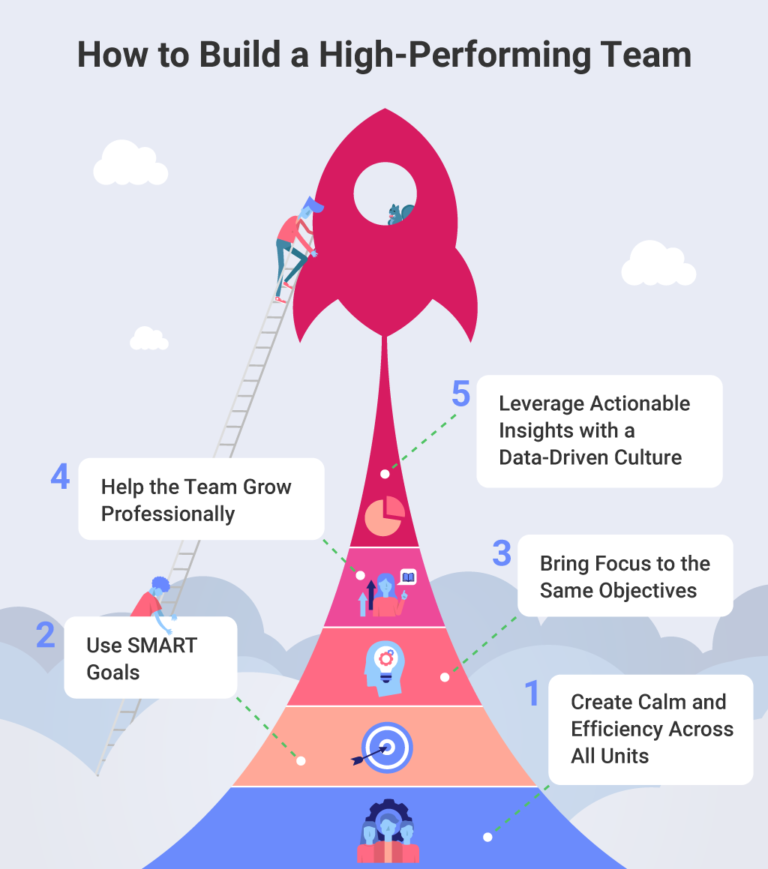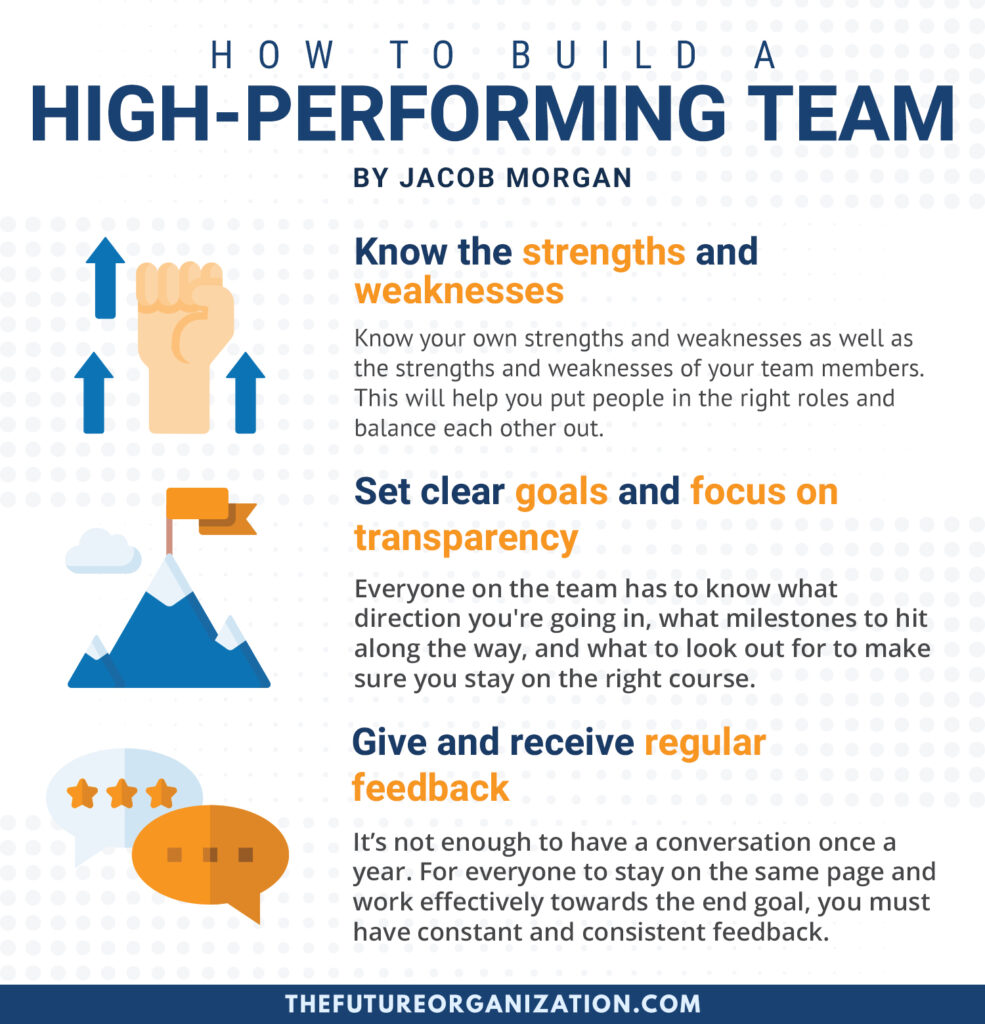
Building a High-Performing Team: Your Essential Guide to Unlocking Group Potential
In today’s fast-paced world, whether you’re leading a small startup, a corporate department, or even a volunteer group, the ability to build and nurture a high-performing team is no longer a luxury – it’s a necessity. But what exactly is a high-performing team, and how do you create one?
This comprehensive guide will break down the essential elements, strategies, and best practices for building a team that not only meets but consistently exceeds its goals, fostering an environment of innovation, collaboration, and shared success.
What Exactly is a High-Performing Team?
Imagine a group of people working together so seamlessly that it feels almost effortless. They understand their goals, trust each other implicitly, communicate openly, and support one another through challenges. That’s a high-performing team.
It’s more than just a collection of talented individuals. It’s a synergy where the collective output is greater than the sum of its individual parts. These teams are characterized by:
- Clear Goals & Vision: Everyone knows what they’re working towards and why it matters.
- Strong Trust & Psychological Safety: Team members feel safe to take risks, share ideas, and even make mistakes without fear of judgment.
- Open Communication: Information flows freely, and everyone feels heard.
- Effective Conflict Resolution: Disagreements are seen as opportunities for growth, not threats.
- Mutual Accountability: Each member takes responsibility for their part and for the team’s overall success.
- Adaptability & Resilience: They can pivot quickly, learn from setbacks, and overcome obstacles.
- High Morale & Engagement: People genuinely enjoy working together and are motivated to contribute their best.
Building such a team isn’t a one-time event; it’s an ongoing journey that requires dedication, strategic effort, and a commitment to continuous improvement.
The Foundation: Setting the Stage for Success
Before you even start "building," you need to lay a strong foundation.
1. Define a Clear Vision and Shared Goals
This is your team’s "North Star." Without it, even the most talented individuals will drift.
- What is the Purpose? Why does this team exist? What problem are you solving?
- What are the Specific Goals? Make them SMART (Specific, Measurable, Achievable, Relevant, Time-bound).
- Example: Instead of "Improve sales," try "Increase Q3 sales by 15% for Product X by September 30th."
- How Do Individual Goals Connect? Ensure every team member understands how their specific tasks contribute to the larger team objective. This creates a sense of shared ownership and purpose.
2. Recruit the Right People for the Right Roles
A team is only as strong as its weakest link. Thoughtful recruitment is crucial.
- Look Beyond Skills: While technical skills are important, also assess soft skills like communication, problem-solving, adaptability, and a collaborative mindset.
- Cultural Fit: Do they align with your team’s values and working style? Someone with perfect skills but a disruptive attitude can derail an entire team.
- Define Roles Clearly: Every team member needs a clear understanding of their responsibilities, authority, and how their role interacts with others. Avoid ambiguity, which can lead to conflict and inefficiency.
- Identify Skill Gaps: Are there essential skills missing from your current team? Recruit to fill those gaps. Sometimes, this means bringing in someone with a different perspective or expertise.
The Bricks & Mortar: Essential Elements for Team Cohesion
Once you have your foundation, you start putting the core elements in place.
3. Foster Open and Transparent Communication
Communication is the lifeblood of any successful team.
- Establish Clear Channels: Decide how the team will communicate for different purposes (e.g., daily stand-ups for quick updates, dedicated chat for urgent issues, regular meetings for strategic discussions).
- Encourage Active Listening: It’s not just about talking; it’s about truly hearing and understanding others’ perspectives.
- Promote Psychological Safety in Communication: Team members should feel comfortable voicing concerns, asking "dumb" questions, or admitting mistakes without fear of ridicule or punishment.
- Regular Check-ins: Don’t wait for problems to arise. Schedule regular one-on-one and team check-ins to discuss progress, challenges, and support needs.
- Be Transparent: Share relevant information, even if it’s difficult. Transparency builds trust and helps the team understand the bigger picture.
4. Build Trust and Psychological Safety
This is arguably the most critical component. Without trust, communication breaks down, collaboration suffers, and innovation stagnates.
- Lead by Example: As a leader, be vulnerable, admit your own mistakes, and show consistent integrity.
- Encourage Vulnerability: Create a space where team members feel safe to be themselves, share personal insights (within professional boundaries), and ask for help.
- Show Empathy: Understand and acknowledge the feelings and perspectives of others.
- Follow Through on Commitments: Do what you say you’ll do, both as a leader and within the team.
- Celebrate Failures as Learning Opportunities: When mistakes happen, focus on what can be learned, not who to blame. This encourages experimentation and innovation.
5. Cultivate True Collaboration
Collaboration is more than just working on the same project; it’s about synergizing efforts.
- Break Down Silos: Encourage cross-functional understanding and cooperation. Help team members see how their work impacts others.
- Promote Shared Ownership: When the whole team feels responsible for the outcome, they’re more invested in supporting each other.
- Facilitate Brainstorming Sessions: Create opportunities for open idea generation where all ideas are welcomed and explored.
- Leverage Technology: Use collaboration tools (e.g., project management software, shared documents, video conferencing) to facilitate seamless teamwork, especially for remote or hybrid teams.
6. Embrace and Resolve Conflict Constructively
Conflict is inevitable in any group of diverse individuals. High-performing teams don’t avoid it; they manage it productively.
- View Conflict as an Opportunity: It can uncover hidden issues, lead to better solutions, and strengthen relationships if handled well.
- Focus on the Issue, Not the Person: Encourage team members to address problems objectively, without personal attacks or blame.
- Establish Ground Rules for Disagreement: How will the team discuss sensitive topics? What’s acceptable and what’s not?
- Mediate When Necessary: As a leader, step in to facilitate discussions when conflicts become unproductive, ensuring all voices are heard and a resolution path is identified.
- Encourage "Agree to Disagree" When Appropriate: Not every conflict needs a winner and loser. Sometimes, understanding differing viewpoints is enough.
The Secret Sauce: Nurturing Growth and Sustaining Performance
Building the team is one thing; keeping it high-performing is another.
7. Provide Effective Leadership and Support
Leaders of high-performing teams are not just managers; they are facilitators, coaches, and cheerleaders.
- Be a Coach, Not a Dictator: Empower your team to make decisions and take ownership. Guide them, don’t just tell them what to do.
- Remove Obstacles: Your role is to clear the path so your team can do their best work.
- Provide Resources: Ensure the team has the tools, training, and information they need.
- Protect Your Team: Shield them from unnecessary distractions and unreasonable demands.
- Show Appreciation: Acknowledge their hard work and dedication.
8. Implement Regular, Constructive Feedback and Recognition
Feedback is the fuel for growth, and recognition is the fuel for motivation.
- Feedback is a Gift: Teach your team to view feedback as an opportunity to improve, not a criticism.
- Make it Specific and Actionable: Instead of "You need to communicate better," try "When you send emails, please include the deadline in the subject line."
- Encourage 360-Degree Feedback: Allow team members to give feedback to each other, not just from leader to subordinate.
- Recognize and Celebrate Successes: Big or small, acknowledge achievements. Public recognition can be incredibly motivating.
- Tailor Recognition: Understand what motivates each individual. For some, it’s public praise; for others, a simple thank you note.
9. Foster Continuous Learning and Development
High-performing teams are always evolving and improving.
- Promote a Growth Mindset: Encourage team members to see challenges as opportunities to learn new skills.
- Invest in Training: Provide opportunities for skill development, whether through courses, workshops, or mentorship.
- Encourage Experimentation: Create a safe environment for trying new approaches and learning from the outcomes.
- Conduct Post-Mortems/Retrospectives: After projects or significant tasks, review what went well, what could be improved, and what lessons were learned. This is crucial for ongoing improvement.
10. Embrace Diversity and Inclusion
A diverse team brings a wealth of perspectives, experiences, and problem-solving approaches. Inclusion ensures those diverse voices are heard and valued.
- Diversity of Thought: Actively seek out individuals with different backgrounds, experiences, skills, and ways of thinking.
- Inclusive Environment: Create a culture where everyone feels respected, valued, and empowered to contribute their unique insights.
- Challenge Unconscious Biases: Be aware of and work to mitigate biases in recruitment, promotions, and daily interactions.
- Encourage Different Perspectives: Actively solicit input from all team members, especially those who might be quieter or have less traditional viewpoints.
Common Pitfalls to Avoid
Even with the best intentions, teams can stumble. Be aware of these common traps:
- Lack of Clarity: Unclear goals, roles, or expectations.
- Poor Communication: Silos, lack of transparency, or fear of speaking up.
- Micromanagement: Leaders stifling autonomy and creativity.
- Ignoring Conflict: Letting disagreements fester and turn into resentment.
- Neglecting Feedback: No constructive criticism or recognition, leading to stagnation and demotivation.
- Blame Culture: Focusing on who is at fault instead of solving the problem.
- Lack of Trust: Team members feeling guarded or unwilling to rely on each other.
Conclusion: The Journey of a High-Performing Team
Building a high-performing team is not a destination you reach and then stop. It’s an ongoing journey of nurturing, adapting, and refining. It requires patience, persistence, and a genuine commitment from every team member and, especially, from the leadership.
By focusing on clear goals, open communication, deep trust, continuous learning, and supportive leadership, you can transform any group of individuals into a cohesive, highly effective unit that consistently achieves outstanding results. The investment in building such a team will pay dividends in productivity, innovation, morale, and ultimately, success for everyone involved. Start laying your foundation today, and watch your team flourish!



Post Comment